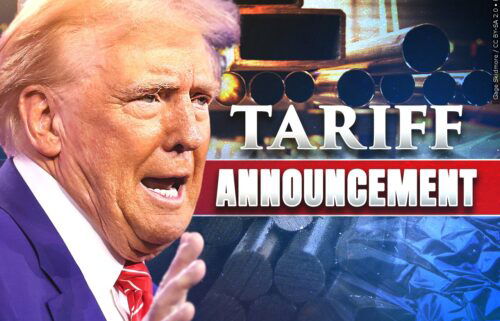Unemployment claims fell to a pandemic low. But there’s still a jobs crisis in America

Here’s the best worst news you’ll hear all week: Unemployment claims fell to a pandemic low. But they’re still higher than at any point during the Great Recession.
A year ago, the United States essentially closed for business, sending tens of millions of workers to the unemployment lines. Many shops and other businesses quickly reopened, adding their laid-off workers back onto payrolls. Weekly first-time jobless claims fell from a peak of of 6.6 million in April 2020 to about 1 million a week in September.
But the numbers have remained stubbornly high since then. Last week, 684,000 people filed for unemployment claims on a seasonally adjusted basis — the first time that number fell below 700,000 during the pandemic. Still, context is key: The highest number of weekly jobless claims during the previous recession was 655,000. So the excitement that the economy is finally improving would have been considered a dire omen during the worst part of the 2008 financial crisis.
“The rate of gross job losses, presumably concentrated in the consumer services sector, remains depressingly rapid,” said Ian Shepherdson, chief economist at Pantheon Macroeconomics.
In a healthy economy, when the unemployment rate is below 4%, jobless claims are typically a third of where they currently stand, according to PNC Senior Economist Bill Adams. Between 2017 and 2019, weekly unemployment claims averaged around 230,000. Roughly 9.5 million fewer workers are on payrolls in the United States today than there were before the pandemic
“There is still a ways to go until the labor market regains all the jobs lost over the past year,” Adams noted.
Last week’s number is actually worse than it appears: Nearly 242,000 people filed for special pandemic unemployment last week, because they were otherwise ineligible to receive standard unemployment insurance.
Each week, Shepherdson said, some companies are either downsizing or throwing in the towel, unable to hang on until the economy reopens. That’s why 4.1 million workers remain on unemployment in the United States on a seasonally adjusted basis.
Treasury Secretary Janet Yellen and Federal Reserve Chairman Jerome Powell echoed that analysis this week as they testified before Congress. They said they’re hopeful the $1.9 trillion stimulus bill can help some businesses stay afloat until the country gets Covid in check with its nationwide vaccine rollout. They’re also hoping it can help juice the economy to get Americans spending again, which should give some struggling companies a much-needed boost.
But the two top regulators tasked with fixing America’s broken economy acknowledged that particularly hard-hit sectors, including travel, leisure, restaurants and hospitality, will remain in dire straits until the pandemic ends.
That’s where economists are hopeful: America’s vaccine rollout is continuing strong, and President Joe Biden said everyone who wants a vaccine should be able to book an appointment by the end of May. So economists believe job growth will start to quickly accelerate as people get their shots and the stimulus starts to take hold.
“Falling coronavirus cases are especially good news for high-contact industries like restaurants, hotels, and other leisure and hospitality businesses,” Adams noted. “As the pandemic comes under control, these businesses will rapidly regain revenue and rehire workers.”
Although jobless claims have been stubbornly stuck in neutral, sliding lower over the past several months, there’s hope on the horizon.
“This gradual attrition should not last much longer,” Sheperdson said. “We expect claims to fall sharply as the economy reopens fully across the second quarter.”


